100 Years of the RAF, No. 19 Squadron circa August 1938, Duxford, UK 1/48 Airfix Spitfire Mk I “early”
This article is part of a series:
- 100 Years of the RAF, No. 19 Squadron circa August 1938, Duxford, UK 1/48 Airfix Spitfire Mk I “early”
- 100 Years of the RAF, 541 Squadron late 1944, Spitfire PR MK XIX, 1/48 Airfix
- 100 Years of the RAF, No. 601 Squadron, Egypt November 1942, 1/48 scale Tamiya 61035 Spitfire Mk Vb
- 100 Years of the RAF, No. 222 Squadron RAF Hornchurch, September 1940, Spitfire Mk Ia, “ZD-R” Tamiya 1/48
- Spitfire Mk Vb Tropical, EP-706 “T*L” No. 249 Squadron as flown by George Beurling at Malta
- 100 Years of the RAF… Alan Deere’s Spitfire Mk I “Kiwi”, No. 54 Squadron Tamiya 1/48
- 100 Years of the RAF, Spitfire Mk Vb, 81 Squadron RAF Hornchurch, June 1942 “FL*A” / BM-461 Tamiya 1/48
This is my second build for the 1930's decade as part of the 100 Years of the RAF (there is yet another 1930's Hurricane Mk I to follow).
When I saw that Airfix had released this kit which would build up a very early Spitfire with a two blade Watts prop, I knew that I would have to get my hands on one.
I was seriously thinking about building it, and then Paul barber announced his plans for this fantastic group build. The stars aligned and I had an early Spitfire on the work bench before I knew what hit me.
This early Spitfire by Airfix is a very nice kit. The details offered right out of the box are amazing.
They offer several different styles of canopy and propellers. The kit included the later De Havilland and Rotol propellers too.
It builds up rather nicely and the cockpit details are stunning right out of the box. There were only two places that caused a little problem during construction.
The first was the fuselage insert that goes just ahead of the cockpit. Mine didn't fit too well and it had a small gap along the sides that I filled in using plastic rod.
The other was the way the main landing gear attaches to the retraction mechanism. This is a rather weak spot in the kit. Other than that it was a little gem to build.
This model was built right out of the box using the kit supplied decals. The decals worked extremely well for me. I was overall very pleased with this one and how it turned out. I didn't want to dirty this one up or weather it at all since at this point in time, these Spitfires were very well maintained, and the plane was almost brand new.
Now I have a very important version that filled in the gap in my ever growing Spitfire collection. This is something that I had been wanting for a long time. Now if Airfix or Tamiya would only make a kit of the Spitfire prototype...
The early Mk I Spitfires used a wooden two blade Watts propeller.
They also used an early version of the Rolls Royce Merlin engine. Shortly after the type entered service, the De Havilland style 3 blade metal propeller became available. The newer propeller offered increased performance over the Watts.
But in order to swap over to the new prop, the engine had to be chanced as well. This was not an "easy" fix. So they soon came up with a merlin that used a "universal" propeller mount. Now they could install a De Havilland or even the Rotol props without the accompanying engine swap.
Another thing that was found on the very early versions is this style of canopy. It was not as raised or full "blown" as the ones used on the later Marks.
Another small variation is the lack of a pry bar on the side entry door. The early Mk I's also used a round mast for the radio antennae cable.
This pry bar was later mounted and often seen on Mk V's, but it could have been retro fitted to some earlier airframes too. Here's a close up photo of the cockpit. This is the detail provided right out of the box. The only addition that would make this better would be the use of a seat belt harness.
This model was painted using Model Master enamels. Too bad the colors needed to build this Spitfire have been discontinued. Apparently the Model Master line of paints was bought out by a company called "Rustoleum" a little while ago.
When they took over the company, it was decided to drop the line of mainly WW2 Aircraft and Armor colors. There are other similar colors still sold by the company that are fairly close, but these are based on the FS Federal Standards numbers are not solely dedicated to RAF, Luftwaffe (and German Armor), Soviet VVS, Imperial Japanese Army and Navy, WW2 French and Italian colors.
So if you have any of these, you might want to use them a little more sparingly until something changes or you find another brand to fill this gap. Me personally I like using enamels...
The RAF 19 Squadron received their Spitfires on August 4th,1938. Prior to this they were flying the Gloster Gauntlet. 19 Squadron continued to fly Spitfires until they swapped over to P-51 Mustangs in early 1944.
No. 19 Squadron participated in combat during the Battle of Britain, where it was part of the 12 Group and formed part of the "Big Wing".
Spitfires and Hurricanes were painted during the later half of 1938 like this. One wing used white and the other wing underside was painted in black that was often referred to as "Night".
My friend Paul Nash supplied me with some very neat original era Black and White photos from 19 Squadron. This is the one I tried to duplicate using my early Spitfire model as the subject.
Now if I only had a starting cart in 1/48 scale and a parachute pack to place on the horizontal stabilizer!
These remaining pictures are also from early Mk I Spitfires in use by 19 Squadron.
and this last one my friend Paul Barber sent me. I'm fairly certain that Paul Nash sent me a copy of this as well. It's a splendid picture showing a wonderful line up of Spitfires on the ground. If you look close one can pick out the early style of sliding canopies that were in use at this time,
with some being flat and others having a slight "bubble" appearance. It's also possible that my Spitfire "H" for Harry is the fourth machine back in the line up. You can see two vertical bars that are either the letter "H" or possibly the letter "U". From this angle it's next to impossible to tell.
I want to express my sincere gratitude and appreciation to my friends Paul Barber for starting this wonderful Group build (and always staying on top of things),
and Paul Nash, for his unparalleled research and correspondence with me during my Spitfire assembly line sequence.
Here's a link to my Spitfire build journal, in case you want to see what madness really looks like:-) My miniature version of "Casa Bromwich" is still up and running. I still have many more Spitfires to finish.
My hat's off to both of you fine gentlemen!
As always,
Comments are Encouraged.
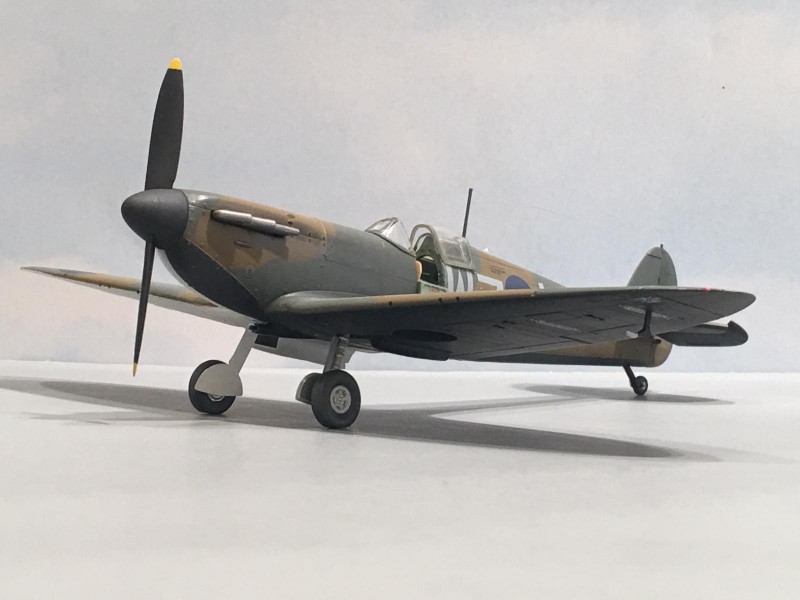
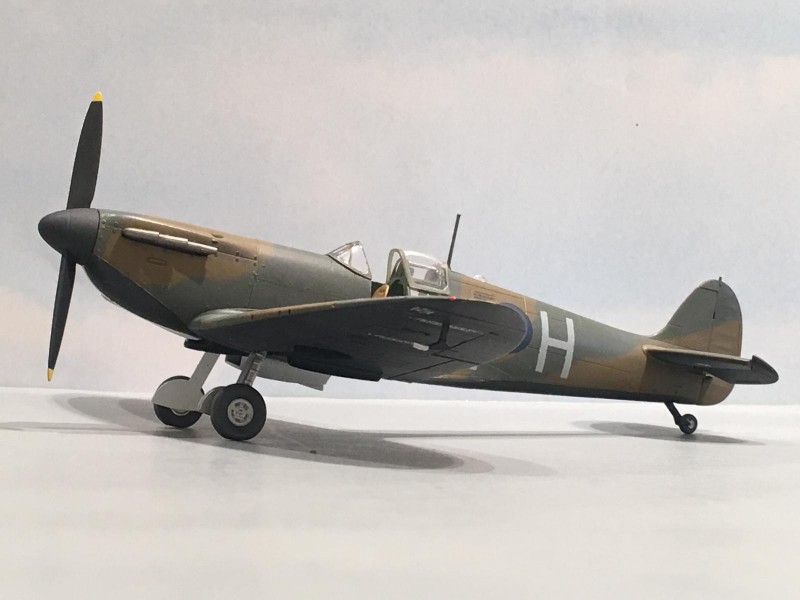

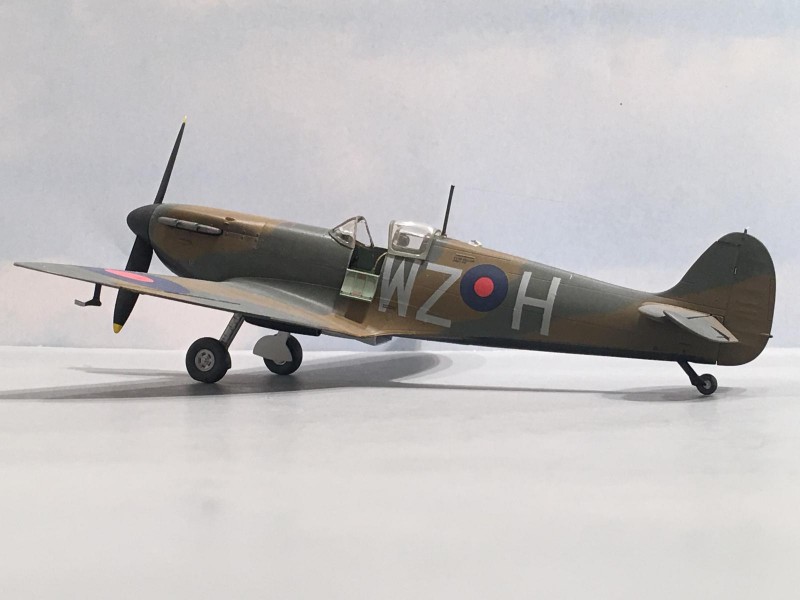
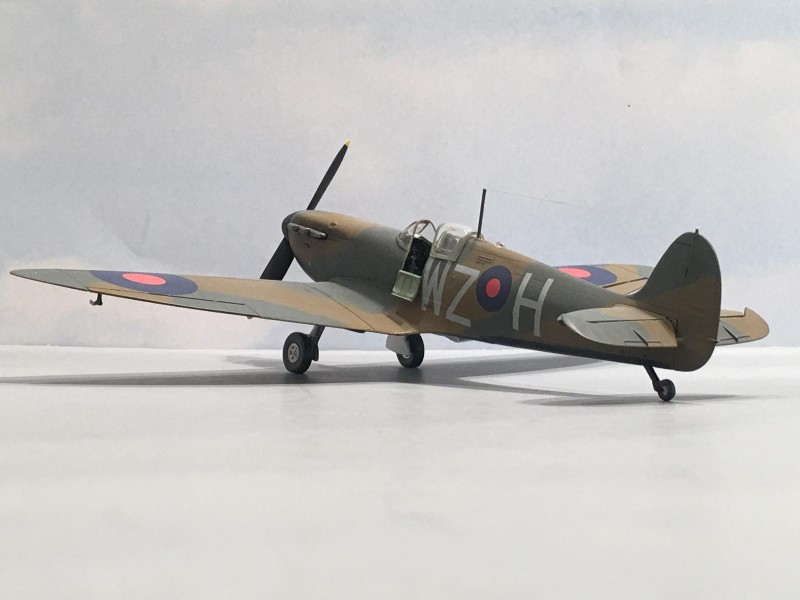
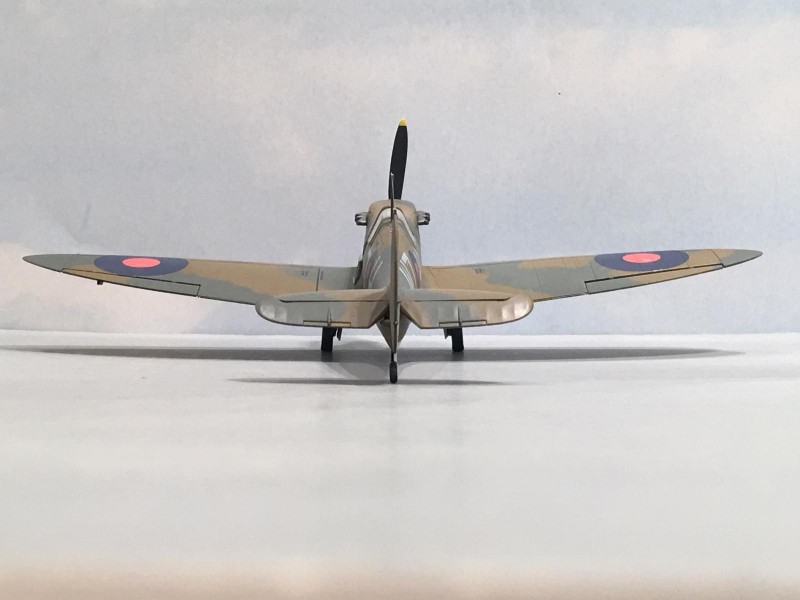

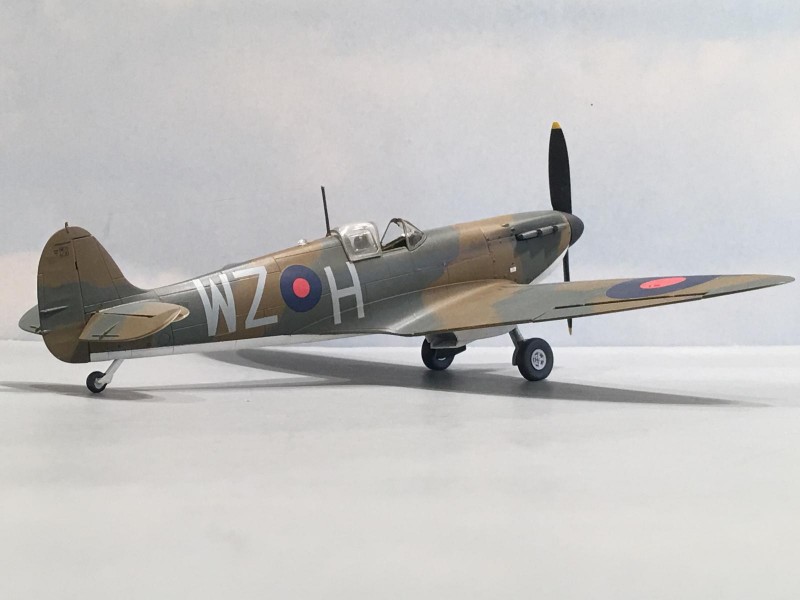
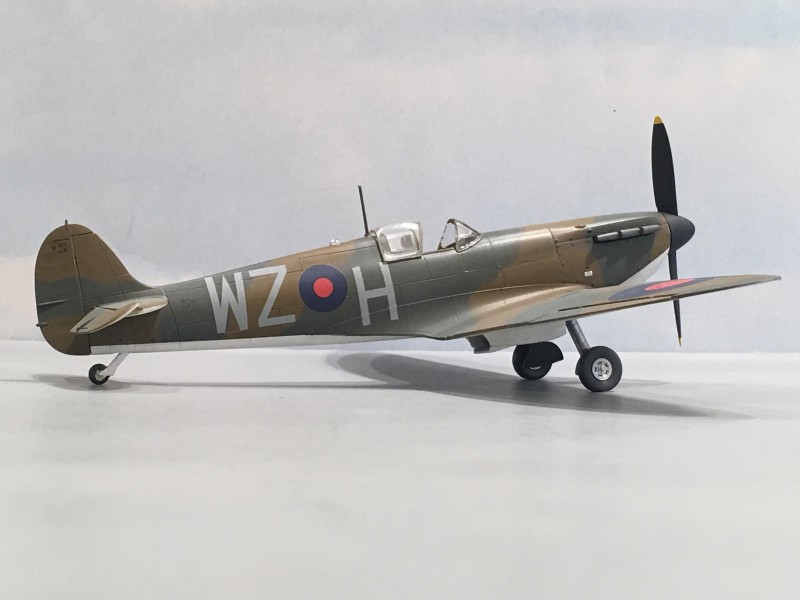

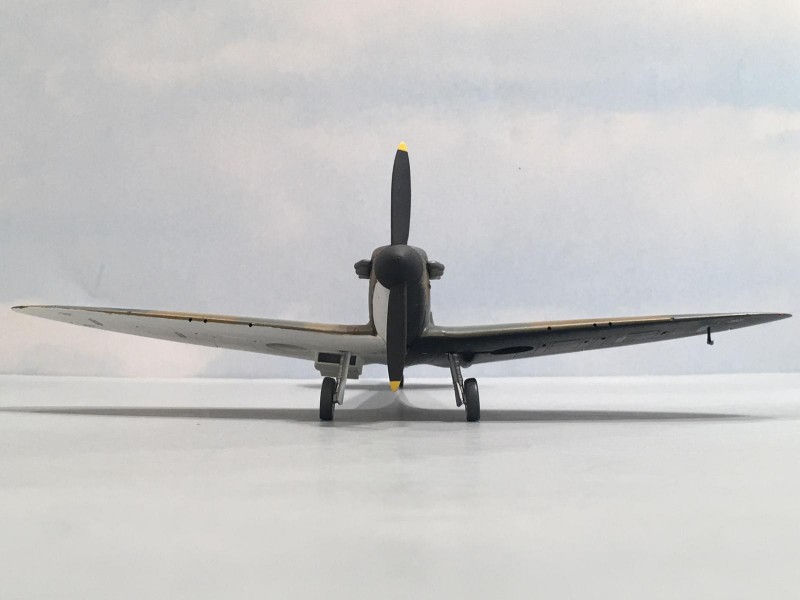
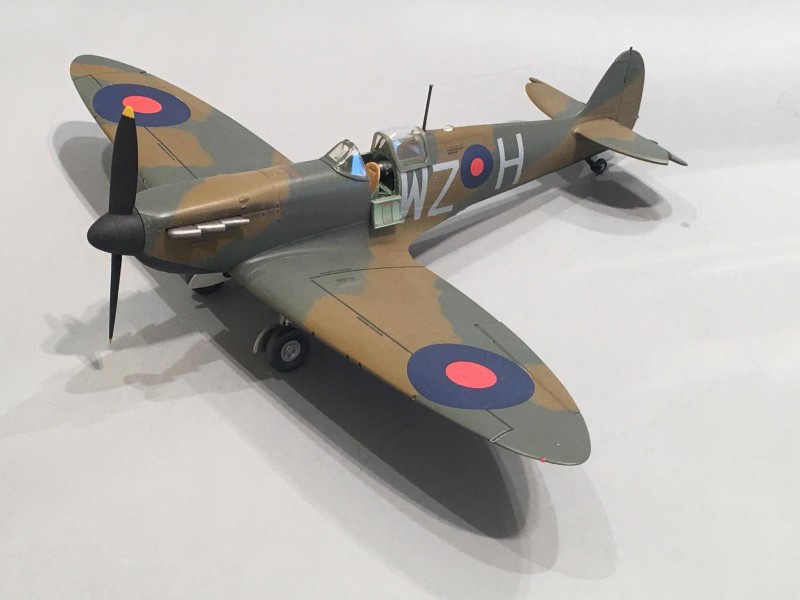
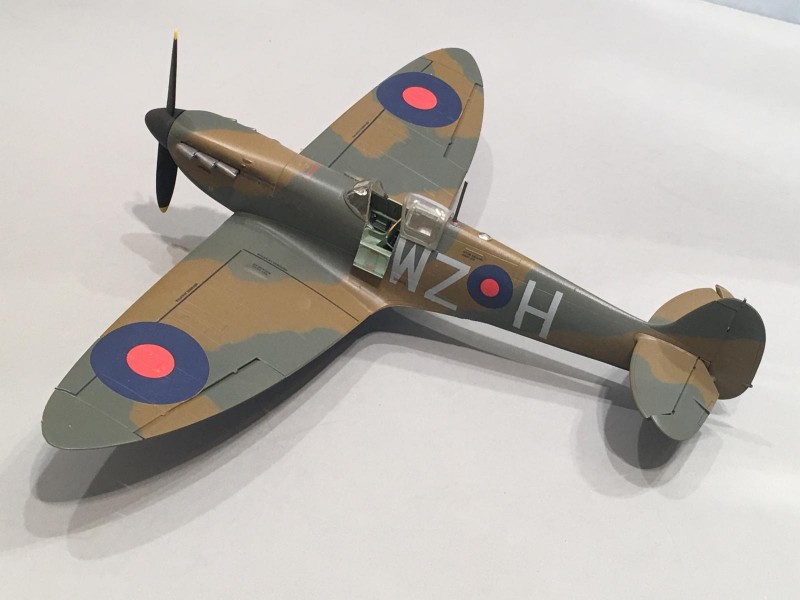


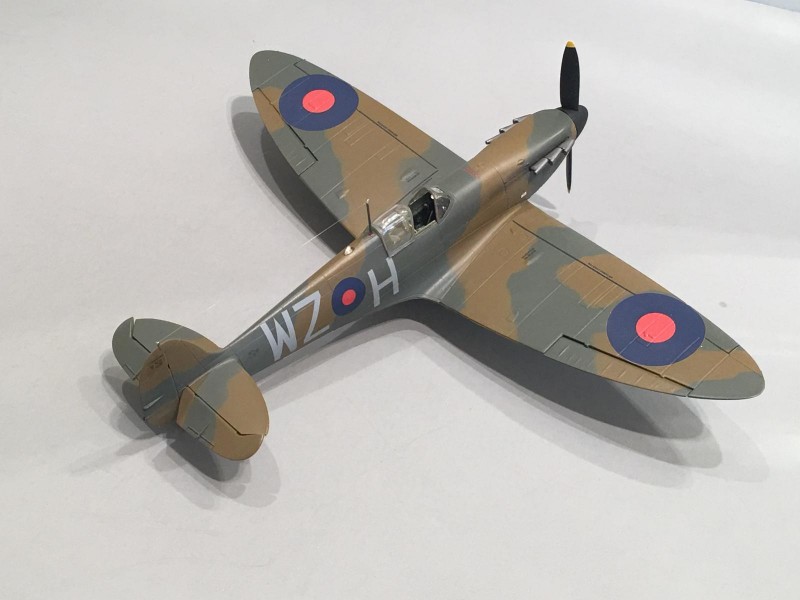
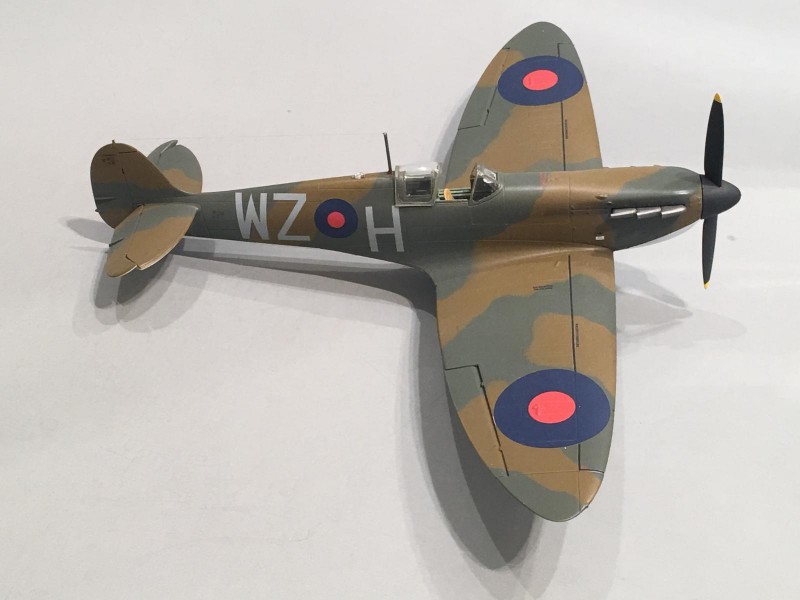

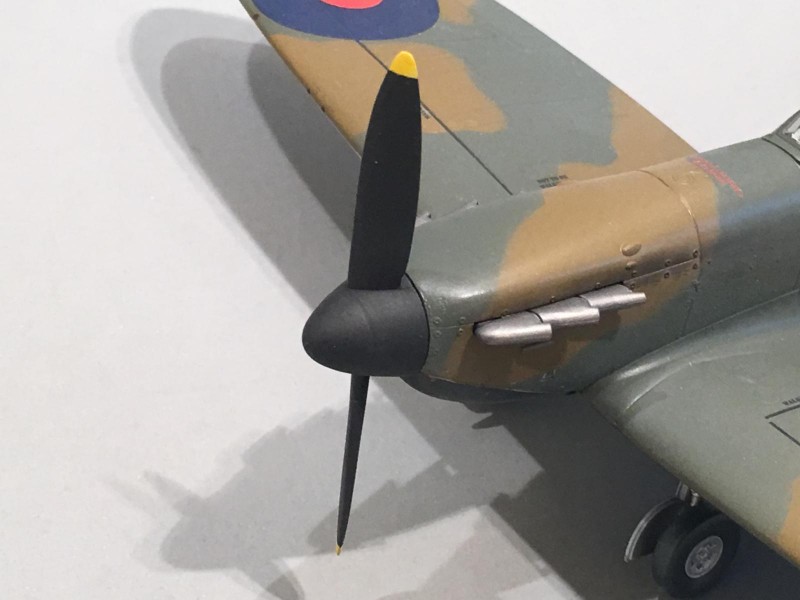
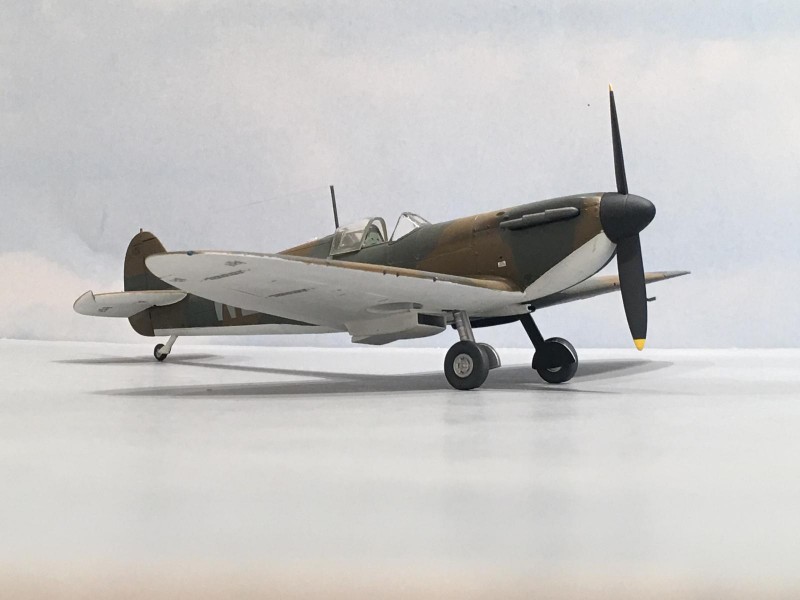
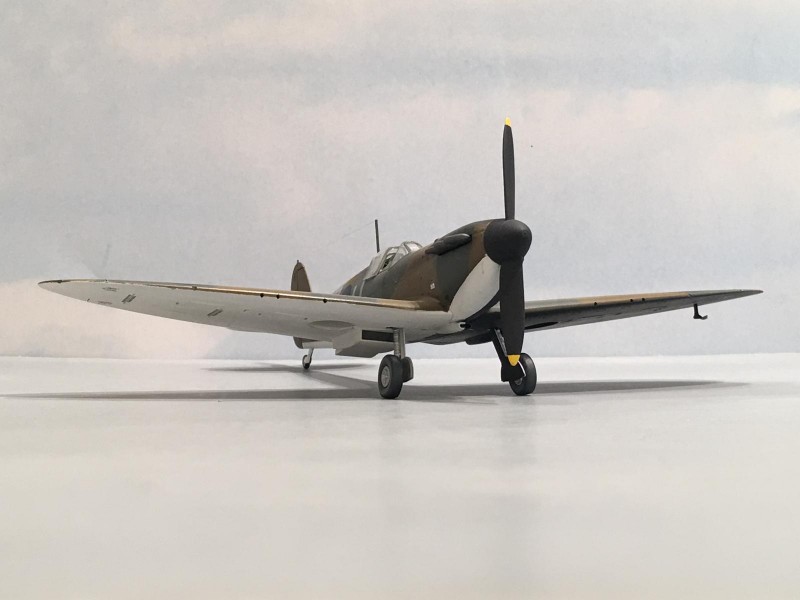
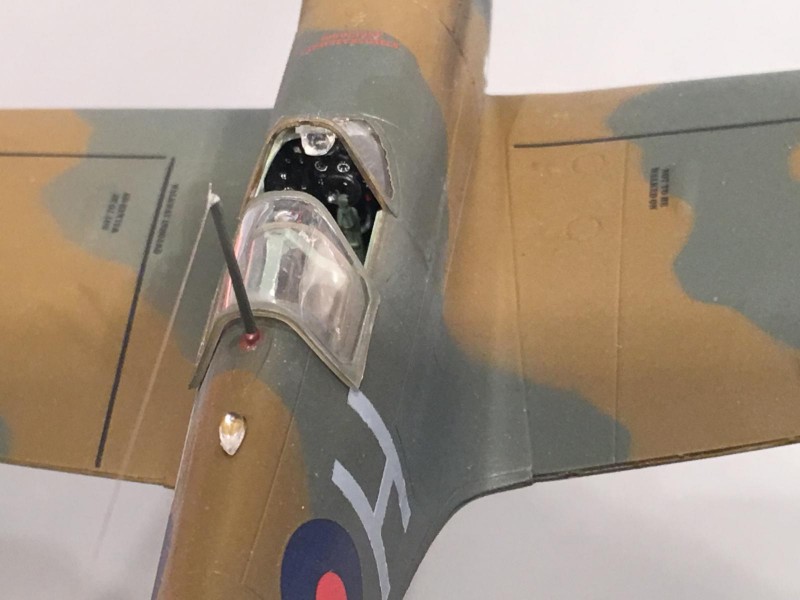
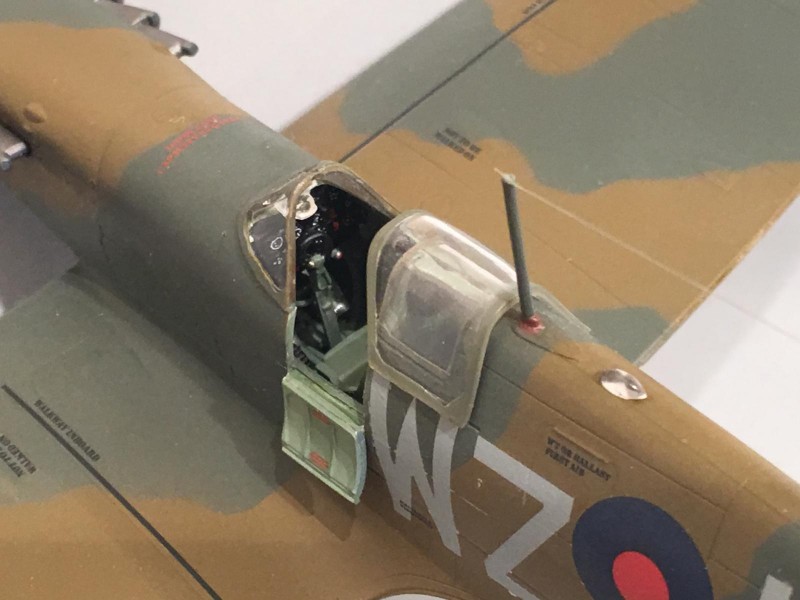
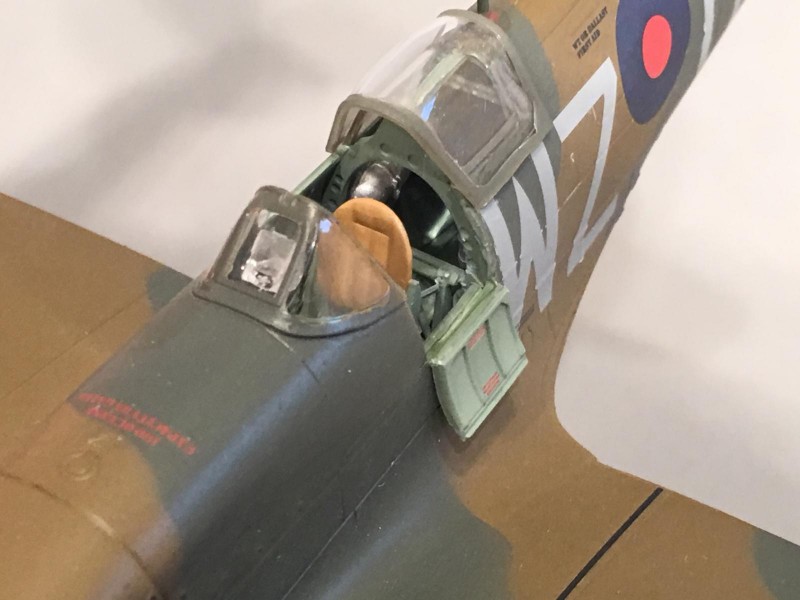
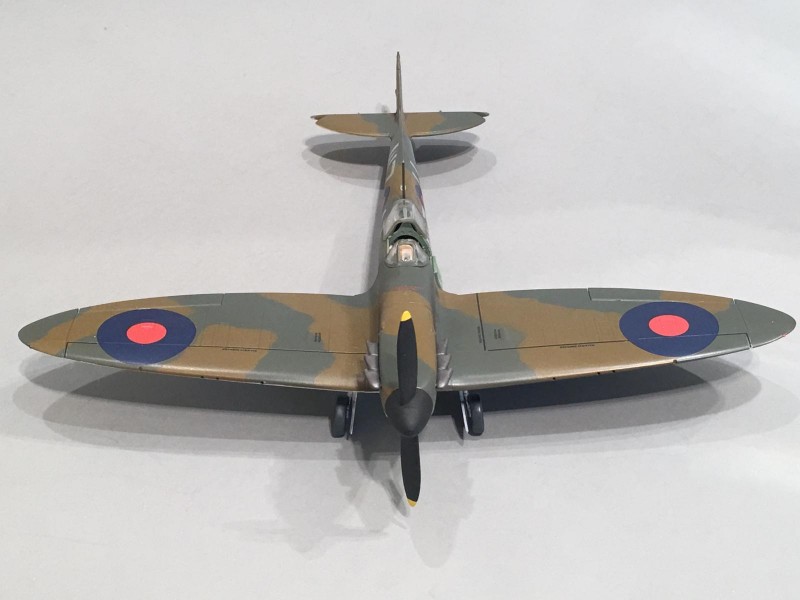
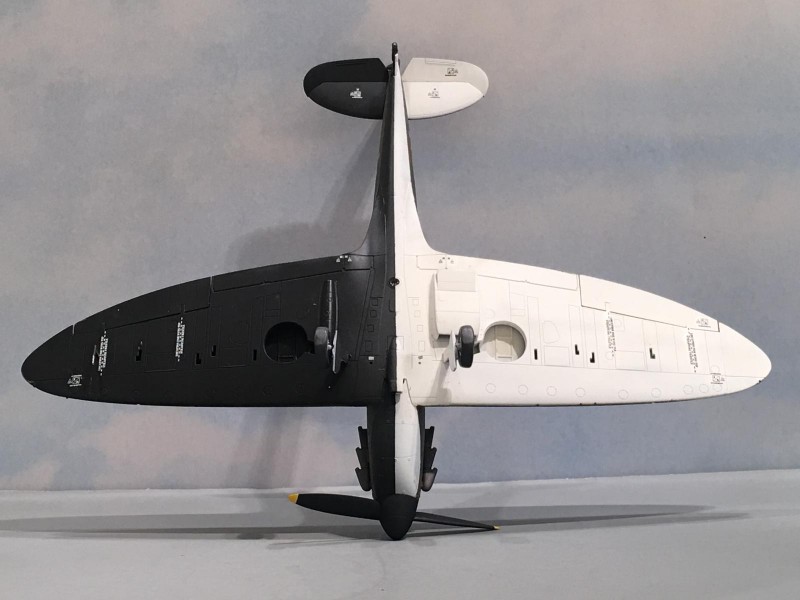
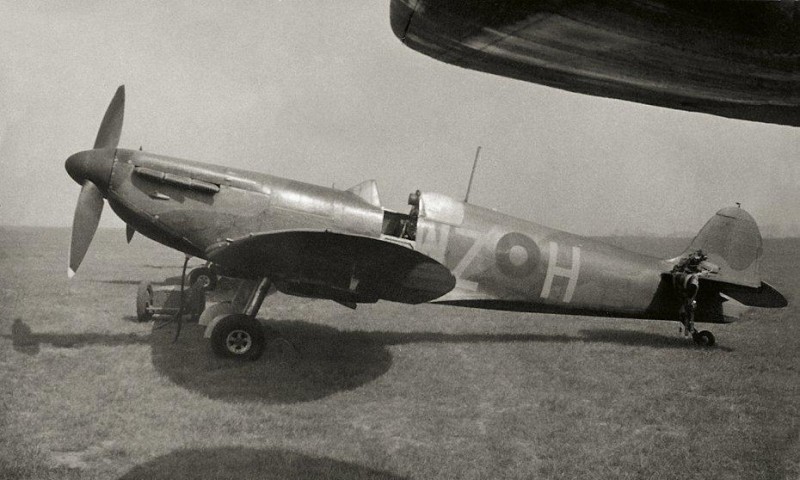
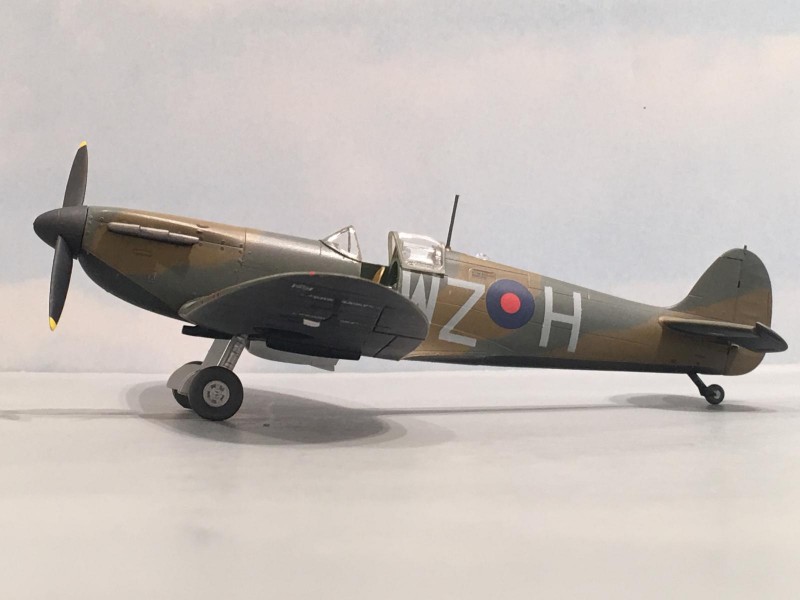
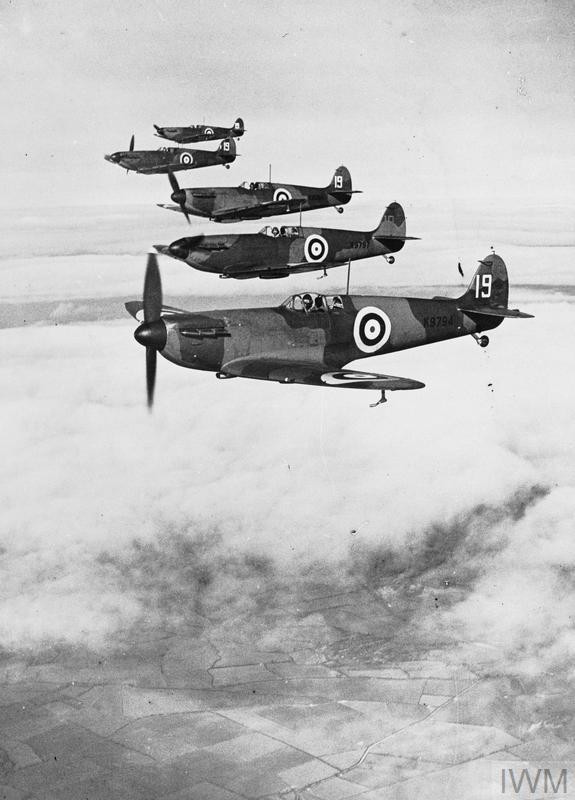
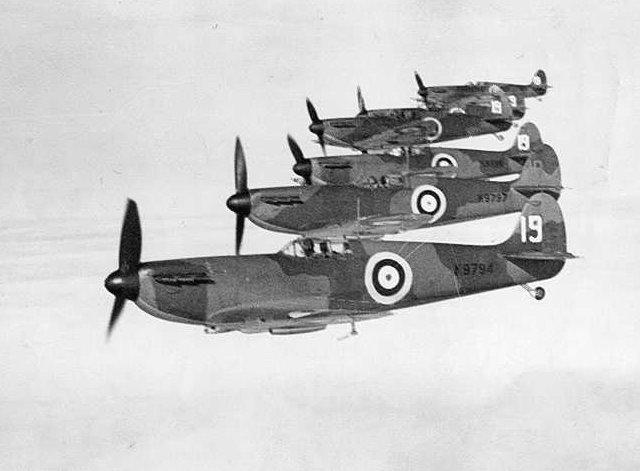
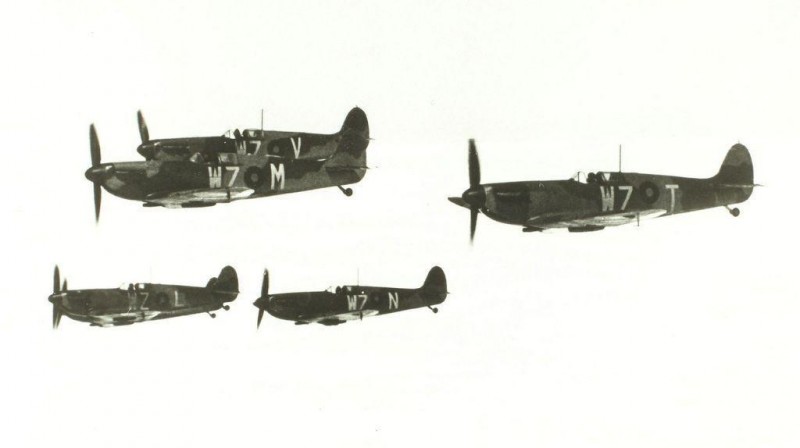
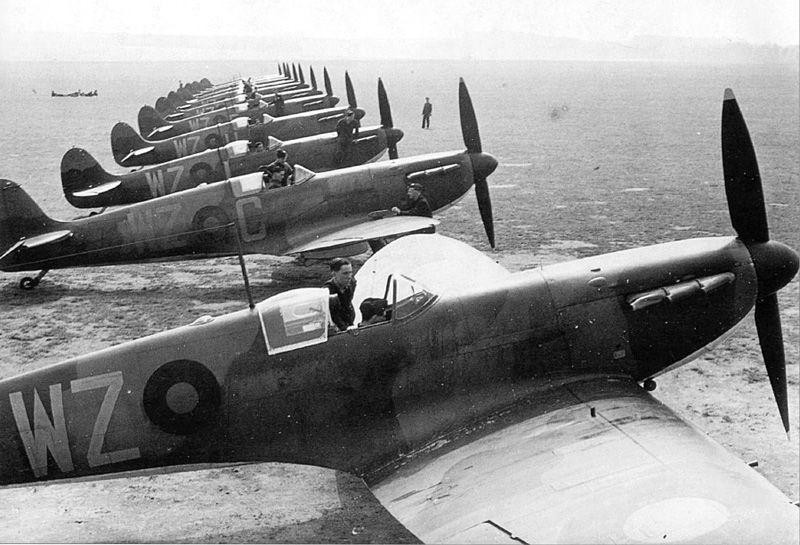
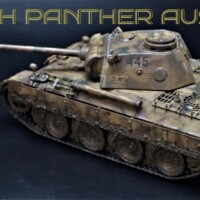
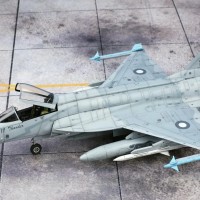
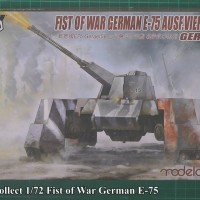
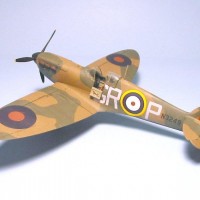
Un precioso Spitfire, una maqueta excelente y un abundante reportaje fotográfico de un gran trabajo ! Creo que buscaré tiempo para hacerme uno pronto.
Julio gracias.
Absolutely perfect Louis, the two-bladed prop looks sensational - much of course like the prototype. I think with a little careful scratch-building around the exhaust you could potentially turn this into a later prototype - it would be great if someone made a conversion kit. I'd like someone to bring out a Schneider trophy Supermarine S4/5/6 in 1/48. Then the gap to the Spitfire could really be bridged! Wish-lists are wonderful things!
All that aside I really love this one - it is the iconic airframe of the RAF just about to bloom. The Merlin engine really was a wonderful thing! And this is a classic LG build - there are a few modellers on here now for whom you could identify a build just by looking at one photograph. it is really clean and the lines are spot on. The shots from directly in front on and behind really show how perfect your build technique is because it is absolutely symmetrical! Congratulations on a fantastic Spitfire! I hope you have dusted off your wide-angle lens or are able to construct a panorama!
Paul,
Thanks for the compliments. But even more thanks go out to you for starting and keeping up with this wonderful group build. I have been thoroughly enjoying it.
As far as the conversion kits, I'm pretty sure that there was one made some years ago but it is very hard to find now. It really would be nice if a mainstream kit manufacturer would make a Spitfire prototype. I'd buy one !
I'm still plugging away with the remainder of the Spitfires. I hope that I can get four more ready before Saturday evening. These are very close to getting done.
Thanks again buddy.
Beautiful! This is a great looking Spitfire, Louis!
Thanks Jeff !
Lovely early Spitfire Louis, this two blade prop really shows off the youth of this legend in the making in 1938. Well done my friend.
Thanks Michel. I have been wanting to get this one done every since I picked it up at the somewhat LHS. There's just something about these early Spitfires. They're special.
Thanks again !
Great looking early Spitfire with some nice historical photos. Very well done Louis.
Thank you very much Julian. I appreciate the compliments my friend.
An exceptional post.
Photography is fantastic, the subject is iconic, the build beautifully done. The painting is excellent, Louis.
My favourite part of this is the comparison shot; almost perfect.
Well done, sir. As I said, exceptional.
Hello David.
It's always good to hear from you. I sincerely appreciate the compliments on this article. The Spitfire is a very special plane. They say if it looks right it will fly right. Judging by looks alone, it would be hard to beat.
This one has to be my closest attempt ever at getting the model to look like the original picture.
Thanks again !
I'll be looking forward to seeing your next installment of "On this Day"...
Fantastic work Louis! And great to have more historical information. Paintwork looks spot-on, and like you mention the seat harness is really the only thing missing in this lovely Airfix kit.
I know you like your enamel paints, I've changed over completely to acrylics. After getting used to work with them the results are just great. Paints I'm using are from Vallejo, Hataka and Lifecolor. They do complete sets with the various airforce colors from differents periods in time as well, all to good result.
Again wondeful work on your early Spitfire.
Hello my friend.
Thanks for the compliments and the information on the paint. I have tried acrylics in the past, with Tamiya paints used primarily. They work ok but I have had problems with them drying out too fast while spraying, and this clogged my air brush. The other problem I had with them was that if you don't use a primer under the acrylic, it has a tendency to lift away from the plastic when you are masking the surfaces for another color.
I'm sure that it's a simple matter of getting used to something that you don't use too often.
I may give these other brands you mentioned a try and see how they work for me.
Thanks again for the compliments and the information on the paints. It's great to hear that these colors are available from different companies.
Take care my friend.
Looking very nice in its early camouflage and markings. Well done. Suggest you take a loook at Airfix´set Airfix 1/48 WWII RAF Ground Crew AIR-04702 for starter cart and ground crew. Don´t know of parachute packs but a blob of putty and some straps from tape can´t be too hard to make.
Thank you very much Stellan for the compliments. I might just try to locate the set you mentioned. If I had the cart, added a parachute on the stabilizer and did a little touch up work on a few of the paint demarcation lines on the rudder / fin, and the rear side of the fuselage this one really would look almost identical to the original picture.
Thanks again !
Beautiful early Spit.!
Thanks Robert !
Another good example of a pre war Spitfire, like the Hurricane in the previous post, seeing these early variants of these amazing fighters. You don't see these often. Quite rare in fact. But to see them in this form, the historical impact as they advanced in the years as war dictates. Even then these early versions were the standard at the time. With the Luftwaffe advancing rapidly in development of the BF 109 and soon the Fw-190 the RAF was a little behind. This is an excellent model of an early Spit, with wonderful photos and historical background of the type. Good work Louis, well done. Thanks for sharing.
Hey Chuck !
Good to hear from you. I wanted to build both a Hurricane and an early Spitfire from this era. To me this time frame is where the RAF left behind the WW1 technology and progressed into more modern types. The Hurricane and the Spitfire are both prime examples of this.
The Hurricane was a hybrid of sorts that still used fabric covering in a lot of places. It used biplane construction technology but had the performance of a low wing monoplane. The fabric covering was easier to repair in the field and the Hurricane didn't take as many man hours to produce as the Spitfire did.
The Spitfire was primarily constructed of metal. It was even more technologically advanced than the Hurricane. The downside is that it took longer to build a Spitfire than it did to build a Hurricane.
I was able to build up one of each to show the difference between the two.
I'm glad you enjoyed the article and thanks for the comments and compliments.
Take care buddy.
Louis - Ditto to all the above, but we all know from the Iron Works production line of old that this is the first of many Spits you've giving the LG treatment to. Looking forward to seeing the others which I'm sure are of a similar peerless standard.
One comment that's probably relevant to any BoB Spits (& Hurris) you're building concerns the Barr & Stroud reflector gunsight on your early Mk 1, which is clearly evident from your pic of the front cockpit area.
If I've got this right, the B&S Mk II sight with a round lens was the standard fitment to all Spits and Hurris once the old ring and bead sights were replaced. The square lens GM2 sight came in sometime during 1941/42, possibly on Mk II Spits but certainly by the time the Mk V came along. Only a niggle for us anoraks who thrive on detail rather than the overall finish which your 19 Sq Spit shows admirably. Paul
2 attached images. Click to enlarge.
Thanks again Paul ! I sincerely mean this.
Without your knowledge and assistance none of these early Spitfires would have been as historically accurate and would not have really looked properly.
I must have accidentally installed the wrong gun sight. The earlier round type was included on the clear sprue going from memory.
Thanks for the information and if I can safely remove the gun sight and replace it with the proper one I'll fix this error.
Please stay tuned for future Spitfire releases. I have four more just about ready for completion.
Thanks again !
Nice work, Louis. I prefer enamel paints too and have been a long time Humbrol and Xtracolor user. Xtracolor has properly matched colors for almost every nation’s air arms. It’s a gloss paint, eliminating the need for the initial gloss coat. It’s the house brand from Hannant’s in the U.K. and can’t be shipped in the mail overseas. It wasn’t available for a long time in the US, but Roll Models started stocking it again this year. Roll Models was recently acquired by Kitlinx, a new US online shop and currently offers it for sale. Good stuff, give it a try.
Thanks John ,
I'll have to get some of the paint from Roll Models. Like you I really prefer using enamel paints.
It's great to know that the colors are still available but I'll have to get them from another company.
Thanks again and take care.
a beauty...a piece of cake
Thanks Bob !
For a guy who is all thumbs, someone please break this mans hands. He's too good and is casting a shadow that some of us will never crawl out from. In all seriousness Louis, I've enjoyed following your blog or "The modeling world according to Louis" and have delighted to see and read your comments on Spitfires. It all translated into having fun,enthusiasm, having a historical perspective and sharing with your fellow modelers. Two thumbs up ...this is what modeling is all about.
Ha ha ... that's a funny thing. It kind of has a ring to it.
"The modeling world according to Louis" ... I like it !
Thanks for the kind words and I'm glad that you enjoyed the historical research and references that I use during the building process.
I try to pass along what I have learned along the way in hopes that it will help others.
As far as modeling goes, I have good days and ones that are not so good. But for the most part it is a relaxing hobby for me.
Some days you get chicken, other days you get feathers.
Thanks again !
Well done Louis !
Thanks Allan !
Another thought about early Spits, after pulling out my boxing and looking at the plastic, early Spits didn't use a motor to drive the hydraulic pump for the landing gear. The pilot had to pump the gear up and down by hand with a stick located on his right side. The pump handle/stick has a curve to it almost at a 90 degree angle. Airfix includes this in their kit.
Yes this hand pump you mentioned is in the cockpit of this model. It's provided as an "extra" part along with the other gear retraction lever that was used on the later Mk I. They list it for use on "Version C" if memory serves me. The nice thing about this particular kit is has option that will allow you to build up many versions of the "early" Spitfire.
Thanks for posting.